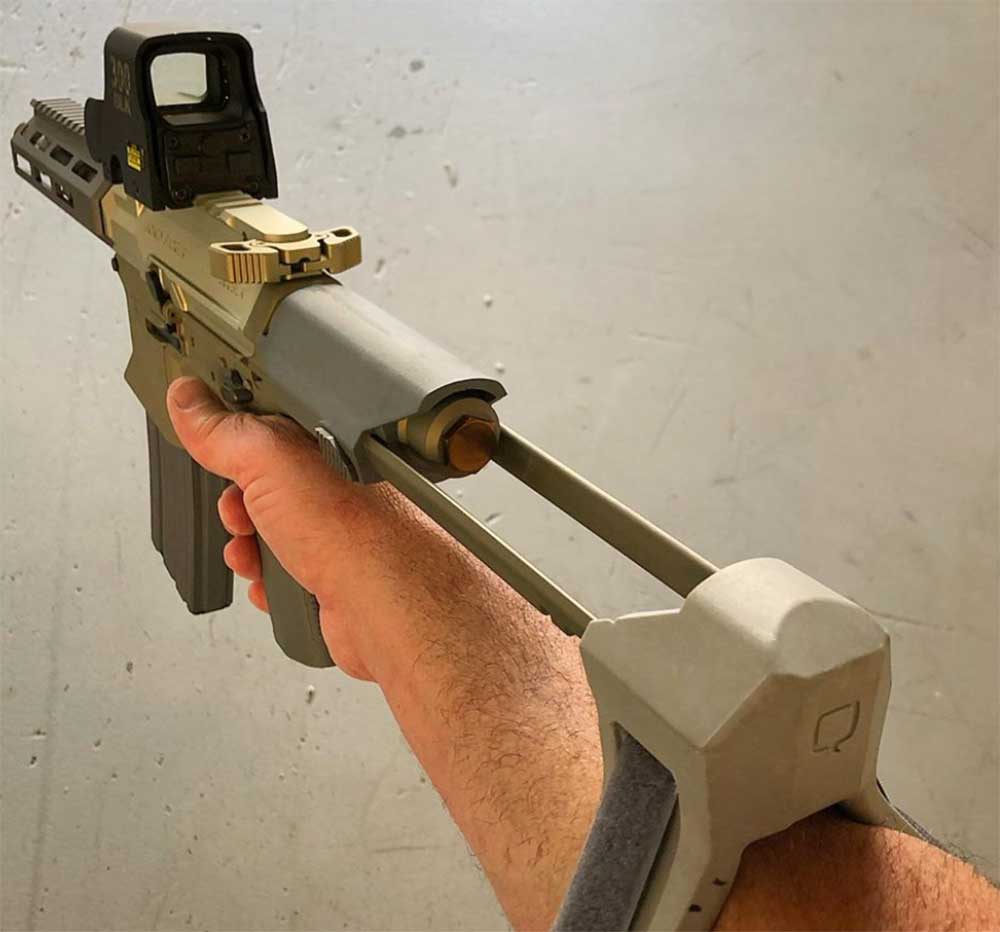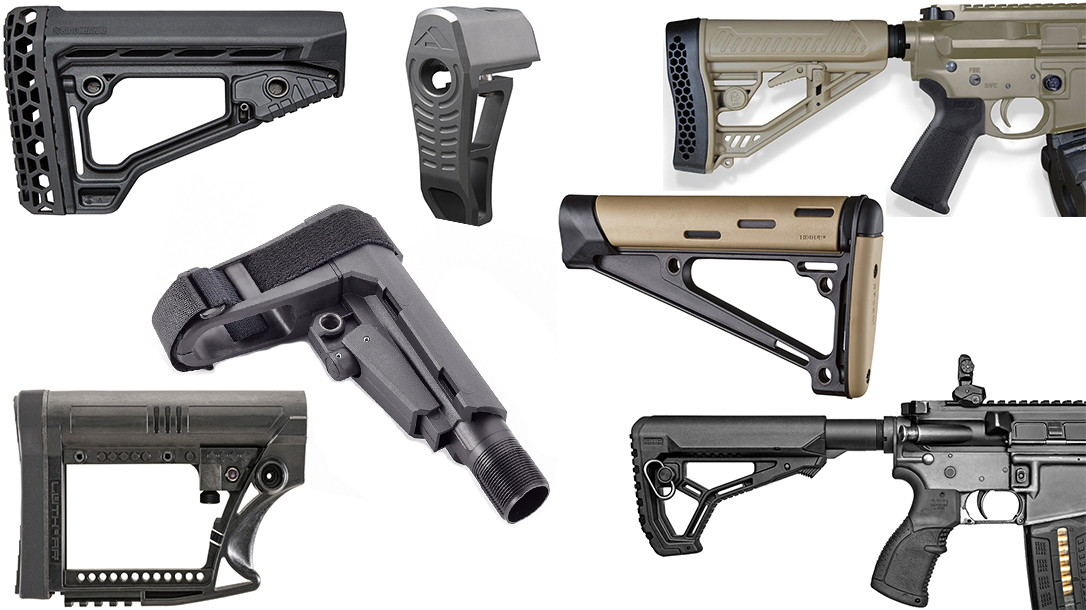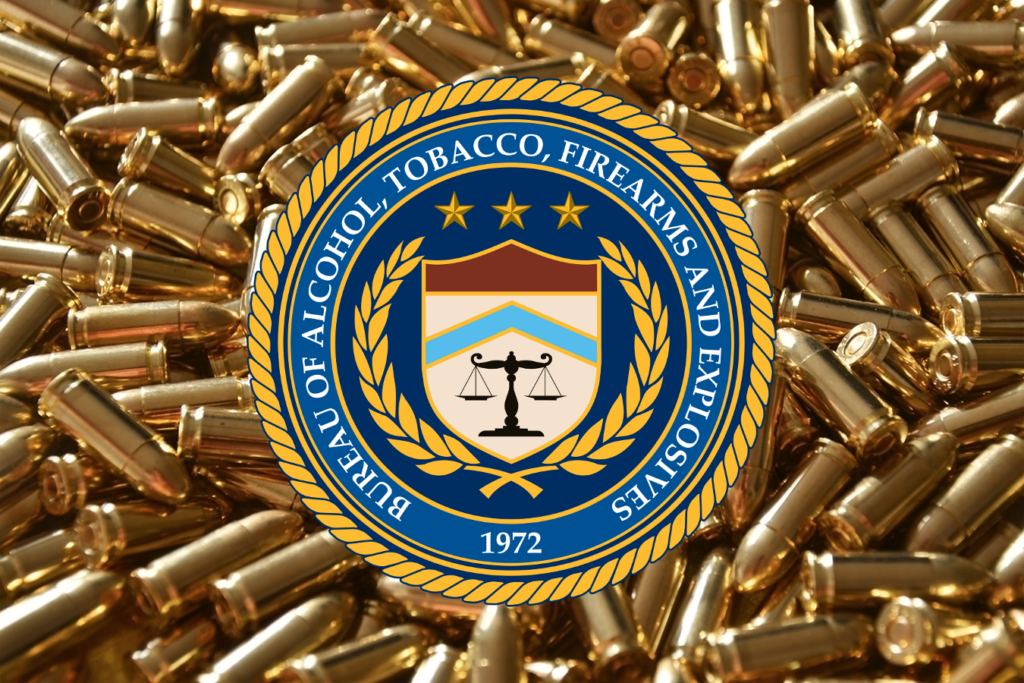Table of Contents
UPDATE: Notice and Request for Comments Withdrawn
[12/23/2020] – Soon after I published this article, the ATF put out a new notice that it was withdrawing the original notice and request for comment on their new guidance for pistol braces from December 18th. As of this update however, the notice is still up on regulations.org and the comment section is still active. The full notice from the ATF can be found here: https://www.atf.gov/firearms/docs/general-notice/sb-criteria-withdrawal-notice-12-23-20pdf
Recently, I posted a comment on regulations.gov dissenting to the recent notice put out by the ATF around classifying pistol braces. The comments become public record and are visible to anyone. As of this post, there have been over 6,300 comments on the notice. I wanted to share my comments here, provide additional context on why this is important to all firearm owners, and encourage everyone to add a comment if possible.
What is a Pistol Brace?
 A pistol brace (or stabalizing brace) is an attachment to a firearm to allow the firearm to be used with a single arm or, more generally, it allows the firearm to be used by individuals with disabilities that would otherwise prevent them from using the firearm. The intention is that these braces are used on pistols and not rifles.
A pistol brace (or stabalizing brace) is an attachment to a firearm to allow the firearm to be used with a single arm or, more generally, it allows the firearm to be used by individuals with disabilities that would otherwise prevent them from using the firearm. The intention is that these braces are used on pistols and not rifles.
What is the controversy?
Given the amazing adaptability and flexibility of the AR style rifle and the potential disabilities that individuals may have, the AR platform has become a go-to firearm for both rifle and pistol. With the confusing and often contradictory guidance that the ATF has put out in the last 4 years, The distinction between what is an AR style pistol vs an AR style rifle has become blurred to the point that any reasonable and responsible law abiding citizen would get confused trying to navigate it. The problem in trying to determine whether a firearm is a pistol or a rifle is that if it is determined that a firearm is a rifle, and the barrel is shorter than 16 inches, then that rifle becomes a “Short Barreled rifle” or SBR, which is controlled by the National Firearms Act as a restricted item. So this is where the ATF notice comes in.
Objective Factors for Classifying Weapons with “Stabilizing Braces”
That is the title of the ATF’s recent notice and is an attempt to clarify what will make an firearm a pistol or a Short Barreled Rifle. This notice might be well intentioned, but unfortunately it includes determining factors such as the weight of the firearm, the type of optic on the firearm, and still leaves a lot of room open for the ATF to make additional arbitrary determinations as to the intent of an individuals firearm.
Why Does This Matter?
For most of our readers, it’s safe to say that their interest in firearms is primarily in defending their home and their family. And this ruling about “Pistol Braces” seems like it only affects a niche community of gun enthusiasts. So why does it matter? I believe this matters for two reasons.
The first is that individual needs for defense of their family and home are incredibly varied. Whether you have determined that the best firearm for defense in your own home is a pistol, shotgun, rifle, or short barreled rifle, it is not up to the ATF to say what is most appropriate for your own defense.
Second, there have been more and more rulings by the ATF and laws pushed in congress that erode our constitutional right to keep and bear arms. The National Firearms Act has already restricted certain firearms and accessories as “restricted”, often in an arbitrary and irresponsible way. Including Short Barreled Rifles on that list is just one example. And now, the ATF is allowed to use the ability to classify items as “restricted” to further remove your rights to keep and bear arms. So yes, pistol brace determinations are pretty far removed from owning a 9mm pistol for self defense. But I consider this notice by the ATF to be the first step in a greater restriction of our rights that will come under the Biden administration. In fact, Joe Biden has already stated that he would direct the ATF to place any semi-automatic firearm on the NFA restricted items list. Below is a great video explaining Joe Bidens proposal and how it will affect nearly every gun owner in the country:
What You Can Do
- If this post has moved you to do something about the ATF’s overreach, then here is how you do it.
- Go to regulations.gov/document/ATF-2020-0001-0001
- Click the blue button named “Comment”
- Leave your comments. Remember, stay on topic and do not use any vulgarity as any comments like that will be automatically removed.
Talking points to consider when adding comments:
- Pistol Braces are intended for use by people with disabilities and disabilities are not one-size-fits-all. They require very custom firearm configurations that could easily be outside the boundaries of the ATF guidance.
- The notice puts out guidance that is arbitrary and confusing, and reduces the determination of whether a firearm is a pistol or a Short Barreled Rifle to the intent of the use, something that is hard to prove or defend.
- This notice has very little benefit to the safety of society and has the potential to turn a lot of law abiding citizens into criminals overnight.
My Comment to the ATF
Below is my comment to the ATF in full. This is my comment that I added as an individual and not for She Will Defend. All opinions and research are my own. Please feel free to use all or parts of this as insipration for your own comment.
Comment in dissent of ATF notice ‘Objective Factors for Classifying Weapons with “Stabilizing Braces”‘
The recent notice put out by the ATF, titled “Objective Factors for Classifying Weapons with ‘Stabilizing Braces'”, in an attempt to clarify what constitutes a brace and therefore a Short Barreled Rifle (SBR), makes it impossible for well intentioned and law abiding firearm owners to be in compliance with the laws and regulations. This is particularly true after the ATF has provided contrary determinations for the past few years in cases of pistol braces. The additional guidance is unnecessarily restrictive and doesn’t take into account all of the disabilities that might otherwise exclude an individual from properly shouldering a traditional rifle stock.
I am a disabled veteran myself, and have friends who served with me that have suffered burns and injuries that don’t make any specific brace type right for all of them. Braces were initially designed to be used by people with disabilities, particularly veterans like these, and the large variety in braces and how people might use them helps people with all types of disabilities. Restricting braces exclusively to one handed, fully extended, non-magnified use reduces the large, nearly infinite potential uses for braces by people with similarly infinite types of disabilities. Disabilities aren’t exclusively one type, and the options for people with disabilities should be as varied as those disabilities, particularly when it concerns their ability to exercise one of their most important and fundamental constitutional rights. Using additional unrelated factors in the brace determination, like the type of optic or eye relief of the optic, further excludes people with a myriad of unique disabilities that don’t neatly fall under any of the categories that the ATF is trying to use for determination.
Causing more consternation for law abiding and well intentioned firearm owners is not warranted in the case of pistol braces. More than 5 million pistol braces of all shapes and for all types of disabilities have been sold since the ATF initially started making determinations between a brace and a stock. Despite so many sales and the number in circulation, there is no evidence that pistol braces have been used in criminal activity, but instead are mostly used by people with disabilities or. There is no societal benefit in attempting to reclassify and further restrict pistol braces, but a lot of dangerous and unintentional outcomes that could happen if this is changed.
Going further than pistol braces specifically, and the reason that pistol braces are even an issue, is because of the arbitrary and unnecessary inclusion of Short Barreled Rifles (SBR’s) on the National Firearms Act list of restricted items. I implore everyone at the ATF, and anyone in the federal legislature who might later read this, to strongly consider removing SBR’s entirely from the NFA restricted items list. Rifles are rarely used to commit crimes (2.9% of all homicides according to the FBI) and short barreled rifles make up an even smaller percentage than that. SBR’s are not the tool of choice when people commit crimes. The placement of SBR’s on the NFA list was arbitrary, even if it was well intentioned, and has not led to a safer society. Removing them from the list will clear up a lot of confusing around impossible to follow regulations that attempt to enforce the original arbitrary SBR determination.
Finally, I would be remiss if I didn’t point out that there are other items that have been arbitrarily added to the NFA’s list of restricted items that would also be extremely beneficial to people with disabilities if they were removed. Suppressors (aka Silencers) are helpful tools to reduce the sound from the shot of a firearm to below harmful decibel levels. The Veterans Administration reports that 1.3 Million veterans currently receive a disability rating for hearing loss, and many more report tinnitus and other hearing issues. Removing suppressors from the list of restricted items would allow people with hearing loss, and veterans with hearing damage like myself in particular, to continue to enjoy shooting sports.
I appreciate the time you have taken to read this and the opportunity to provide comments and feedback on the ATF guidance around pistol braces. While the guidance is well intentioned, it is otherwise arbitrary, has no value in making a safer society, and doesn’t take into account the myriad of disabilities that would preclude law abiding citizens from exercising their constitutionally protected rights, making it a detriment and a danger to the rights of all law abiding citizens.
Russell Winkler
